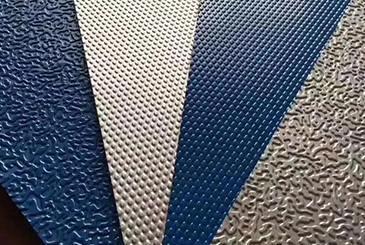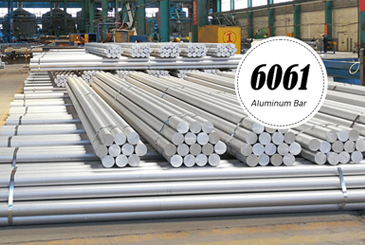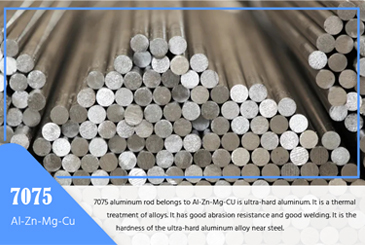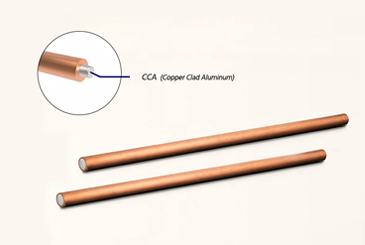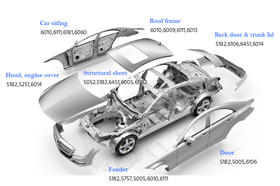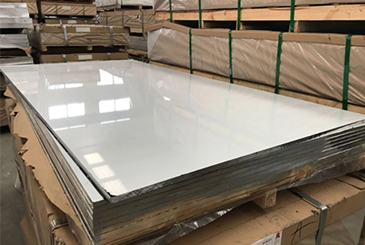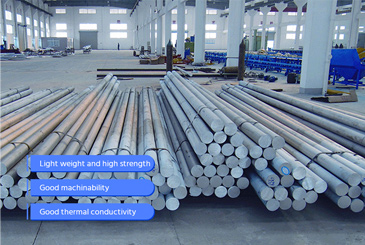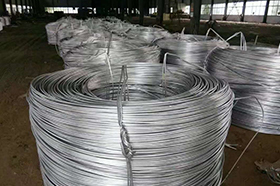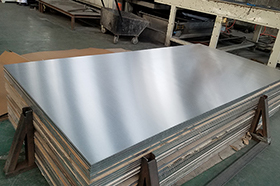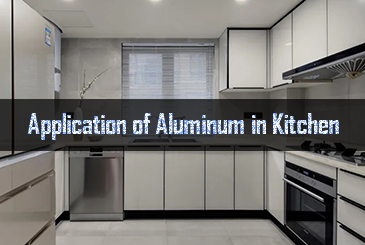Aluminum Electrical Conduit is a metallic tubing system made from corrosion-resistant 6000 series aluminum alloys, designed to encase and protect electrical wires and cables.
Instant Quote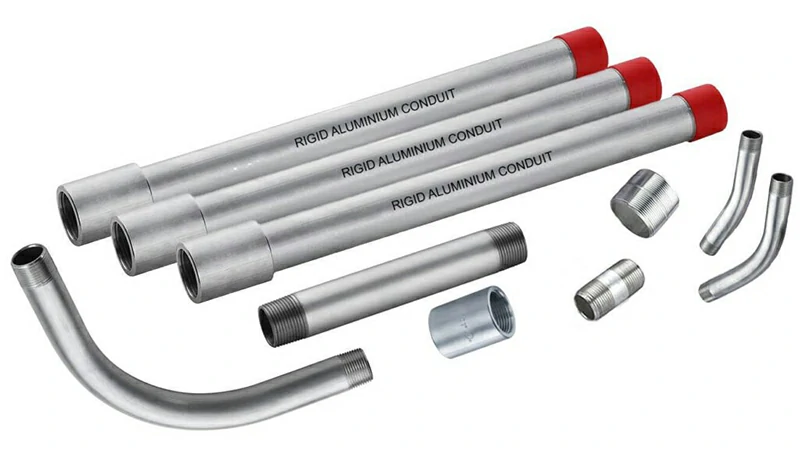
Compared to traditional steel conduits, aluminum conduits weigh only about one-third as much, are naturally corrosion-resistant, and generate no magnetic interference. This makes them widely used in both indoor and outdoor wiring applications, chemical and marine environments, data centers, and renewable energy facilities—especially where lightweight and corrosion resistance are equally critical.
Key Advantages:
- Lightweight Installation – Aluminum has only about one-third the density of steel, reducing labor and safety costs for elevated or long-distance cable runs.
- Excellent Corrosion Resistance – Conduits comply with ANSI C80.5 / UL 6A rigid aluminum conduit standards. The alloys used meet ASTM B241/B221, maintaining structural integrity in salt-spray, humid, or chemically aggressive environments.
- Non-Magnetic & EMI Friendly – Naturally non-magnetic, making it ideal for EMI-sensitive applications such as medical, telecom, and server rooms.
- 100% Recyclable – Manufactured with low-carbon aluminum, supporting your project's ESG and carbon-neutral goals.
Types of Aluminum Electrical Conduit
Rigid Aluminum Conduit(RMC)
Rigid Aluminum Conduit (RMC) is a thick-walled, threaded metal conduit system designed to protect electrical cables in harsh or high mechanical-protection environments.
Click to Order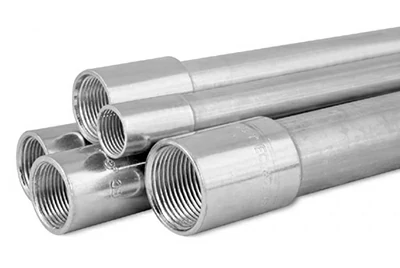
Made from marine-grade 6xxx series aluminum alloys via seamless extrusion, and finished with anodic passivation, it maintains electrical continuity and structural strength even in salt spray, humid, or chemical environments. Fully compliant with ANSI C80.5 / UL 6A, it's a mainstream choice for rigid conduit systems.
Key Features
- Lightweight & Strong – Weighs only about 1/3 of a steel conduit of the same size. One installer can perform overhead mounting, reducing installation time and fall risk.
- Corrosion-Resistant & Durable – Dual protection from natural oxide film and anodized layer allows more than 20 years of rust-free performance in coastal, port, or chemical plant environments.
- Thread Compatibility – Ends feature NPS threads (ANSI/ASME B1.20.1). Each pipe ships with standard aluminum couplings and color-coded thread protectors, and is compatible with steel or cast aluminum fittings.
- EMI Friendly – Non-magnetic body reduces eddy current and leakage inductance, making it ideal for hospitals, data centers, and rail transit signal systems.
Specifications
| Specifications | Range |
| Nominal size | ½″, ¾″, 1″, 1¼″, 1½″, 2″, 2½″, 3″, 3½″, 4″, 5″, 6″ |
| Standard length | 10 ft (with NPT thread & 1 coupling), can be cut to size as per drawing |
| Wall thickness Alloy Surface treatment | NEC Heavy Grade (reference UL 6A), see right column for typical values: |
| ½″–1½″: 0.104″–0.138″ | |
| 2″–4″: 0.146″–0.225″ | |
| Thread | 6061-T6,6063-T5 |
| Specifications | Mill Finish / Anodized / Powder Coated |
| Nominal size | ANSI/ASME B1.20.1 NPT, ¾ in per ft taper |
Rigid Aluminum Conduit Size Chart
| Trade Size | Metric Designator | Outer Diameter | Wall thickness | Weight* | Number of bundles* |
| in / mm | in / mm | lb / 100 ft · kg / 30.5 m | ft · m | ||
| ½″ | 16 | 0.840 / 21.34 | 0.104 / 2.64 | 28 / 12.7 | 2 500 / 762.5 |
| ¾″ | 21 | 1.050 / 26.67 | 0.107 / 2.72 | 37 / 17.0 | 2 500 / 762.5 |
| 1″ | 27 | 1.315 / 33.40 | 0.126 / 3.20 | 55 / 24.7 | 2 000 / 610.0 |
| 1 ¼″ | 35 | 1.660 / 42.16 | 0.133 / 3.38 | 72 / 32.5 | 1 000 / 304.8 |
| 1 ½″ | 41 | 1.900 / 48.26 | 0.138 / 3.51 | 89 / 40.2 | 1 000 / 304.8 |
| 2″ | 53 | 2.375 / 60.33 | 0.146 / 3.71 | 119 / 53.8 | 450 / 137.2 |
| 2 ½″ | 63 | 2.875 / 73.03 | 0.193 / 4.90 | 188 / 85.0 | 300 / 91.5 |
| 3″ | 78 | 3.500 / 88.90 | 0.205 / 5.21 | 246 / 111.7 | 200 / 61.0 |
| 3 ½″ | 91 | 4.000 / 101.60 | 0.215 / 5.46 | 296 / 134.1 | 200 / 61.0 |
| 4″ | 103 | 4.500 / 114.30 | 0.225 / 5.72 | 350 / 158.9 | 200 / 61.0 |
| 5″ | 129 | 5.563 / 141.30 | 0.245 / 6.22 | 479 / 217.2 | 80 / 23.4 |
| 6″ | 155 | 6.625 / 168.28 | 0.266 / 6.76 | 635 / 287.8 | 60 / 18.3 |
½″ - 1½″ conduit outer diameter: Tolerance ±0.015 in;2″ - 6″ conduit outer diameter: Tolerance ±1%;All conduit ends are pre-installed with standard couplings and color-coded thread protectors for quick and easy identification on-site.
Accessory Ecosystem
- Connection: Aluminum or zinc-alloy couplings, including insulated versions, for fast extension or line repair.
- Direction: 90° / 45° elbows, bends, vertical boxes, pre-installed with O-ring waterproof seals.
- Fixation: One-hole / two-hole straps, crossbars, seismic braces, and thermal expansion sliders.
- Protection: Grounding bushings, anti-pullout zinc plugs, terminal sealing caps.
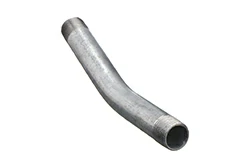
30° Rigid Aluminum Elbow
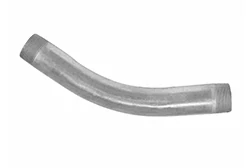
45° Rigid Aluminum Elbow
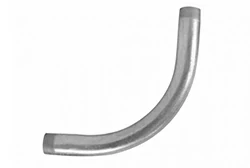
90° Rigid Aluminum Elbow
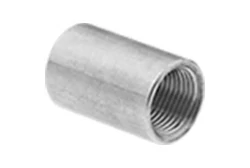
Rigid Aluminum Conduit Coupling
Connects rigid aluminum conduits. Made from non-magnetic aluminum, these couplings are resistant to moisture and corrosive environments.
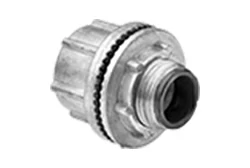
Rigid Aluminum Conduit Adapter
Also called a hub, this adapter connects rigid aluminum conduit to knockout holes on junction boxes or enclosures. Made from non-magnetic aluminum, it resists wet and corrosive environments.
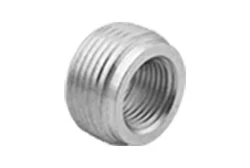
Rigid Aluminum Conduit Bushing
Used to connect two different conduit sizes, these bushings are made from non-magnetic aluminum and are suitable for moisture-rich and corrosive settings.
Typical Applications
- Highly Corrosive Industries:Long-distance trunk cable protection in offshore platforms, chemical tank farms, and wastewater treatment plants.
- Commercial / Public Building Exteriors:Rooftop PV combiner conduit systems for hotels and hospitals. Maintains a uniform exterior appearance and does not rust.
- Transportation Infrastructure:Cable routing for highway toll stations, bridge lighting, and subway tunnel fire protection and communications.
- Renewable Energy Projects:Internal wiring for wind turbine towers and solar thermal power plants. The lightweight structure reduces tower load.
- Hazardous Locations (Class I, II, III):When paired with explosion-proof fittings, suitable for oil and gas recovery stations, grain silos, and other dangerous environments.
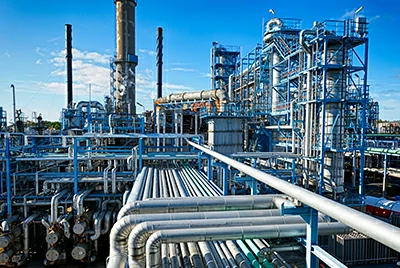



Aluminum EMT Conduit
Aluminum EMT (Electrical Metallic Tubing) is a thin-wall, non-threaded conduit for indoor or protected wiring. At one-third the weight of steel EMT, it still meets NEC standards for strength and grounding. It’s easier to cut, bend, and install, boosting on-site efficiency.
Contact us now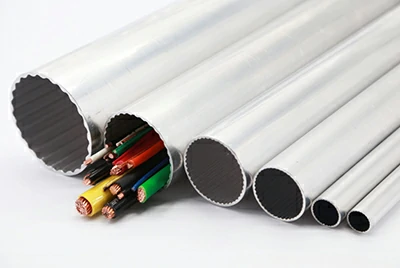
Key Features
- Ultra-light and easy to bend – Made from 6063-T5 alloy with a thin-wall structure. Manual benders can easily form it in one step, enhancing efficiency in overhead or dense conduit installations.
- Naturally corrosion-resistant – The natural aluminum oxide layer resists indoor humidity and light condensation over time, eliminating the need for rust-proof painting.
- Non-magnetic & EMI-friendly – Provides a safe wiring channel in environments sensitive to electromagnetic interference, such as data centers and medical imaging rooms.
- Tool compatibility – Compatible with steel EMT tools and accessories such as cutters, deburring tools, crimpers, and compression fittings, reducing the need for additional investment.
Available Sizes
| Item | Standard Range (Metric/Imperial) |
| Nominal size | ½", ¾", 1", 1¼", 1½", 2", 2½", 3", 3½", 4" |
| Length | 10 ft (3.05 m) | Cut to size as per drawing |
| Wall thickness | Thin wall tolerance per UL 797A; Extruded in one piece, no welds |
| Surface condition | Mill Finish / Silver Anodized / Coating |
| Packaging | Bundled or wooden pallet; Insulated caps on ends, sizes consistent with color coding |
Matching Fittings & Accessories
- Compression / Set-Screw Aluminum EMT Connectors & Couplings – Secure and reliable joining of conduit runs.
- Aluminum Locknuts & Insulated Bushings – Protect cables and ensure grounding continuity.
- Zinc-coated EMT Straps & Hangers – Compatible with aluminum conduit to prevent galvanic corrosion.
- Preformed 90° Aluminum Elbows & Pull Boxes – No on-site bending needed, enabling quick turns and routing.
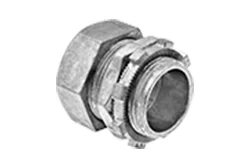
Aluminum EMT Adapter
Connects conduit to knockout holes in outlet boxes or enclosures.
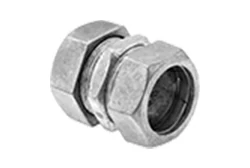
Aluminum EMT Connector
Joins different sections of EMT conduit securely.
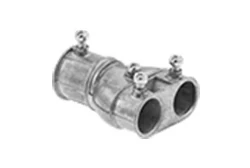
Aluminum EMT Reducer
Connects conduits of different diameters for seamless transitions.
Typical Applications
- Commercial & Public Buildings – Indoor power and lighting circuits in shopping malls, hospitals, and office buildings.
- Data Centers / Telecom Rooms – Signal wiring routes for areas with high EMI sensitivity.
- Schools & Airports – Fire alarm, public address, and low-voltage conduit inside ceilings and walls.
- Light Industrial Workshops – Power distribution in non-oily, lightly corrosive environments.
- High-Rise Residential Renovations – Reduces shaft load and speeds up installation.



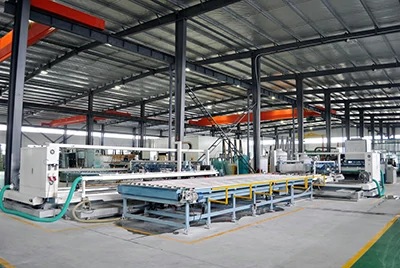
Flexible Aluminum Conduit
Flexible aluminum conduit is made of helically wound thin-wall aluminum strip or aluminum alloy strip, enabling 360° free bending and twisting without the need for on-site bending tools. It is especially suitable for areas with equipment vibration, tight spaces, or frequently changing wiring directions.
Contact us now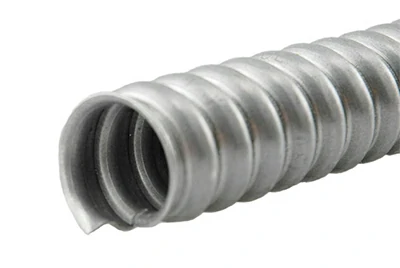
Compared to rigid conduit, it allows fast routing in confined or complex layouts while maintaining aluminum's inherent properties of being lightweight, corrosion-resistant, and non-magnetic. It is widely used in machine tool wiring, automation equipment, vibration motors, ship decks, and outdoor lighting—all scenarios requiring "flexible, moving cable protection.”
Common types include
- Standard Flexible Type (Dry Location)
- Liquid-Tight Flexible Type (with PVC or TPU outer jacket, compliant with UL 360)
- EMI Shielded Type (with braided copper shielding layer)
Key Features
- High flexibility and fatigue resistance – Helical structure allows frequent bending/displacement without collapsing or cracking.
- Excellent corrosion resistance – Natural aluminum oxide layer plus optional PVC/TPU waterproof jackets make it ideal for moist, salt-fog, or oil-mist environments.
- Lightweight and easy to install – About 30%–40% lighter than steel flexible conduit, reducing installation and maintenance load.
- EMI-friendly – Non-magnetic construction helps reduce electromagnetic interference for sensitive equipment and signal cables.
- Multiple jacket options – Available in flame-retardant, liquid-tight, and oil-resistant jackets to meet various protection levels.
Available Sizes
| Project | Size range | Minimum bend radius* | Standard supply | Sheath options |
| Metric | 16 mm – 63 mm | 3 × OD | 30 m / roll | Bare aluminum / PVC liquid-tight / TPU oil-resistant |
| Imperial | 3⁄8" – 2" | 4 × OD | 100 ft / roll | Same as above |
Compatible Accessories
- Threaded connectors (Straight / 90°) – Made of aluminum alloy or brass, available in NPT or G threads.
- Liquid-tight glands – Built-in rubber gaskets ensure IP65–IP67 protection.
- Locknuts & insulated bushings – Secure conduit to distribution boxes and protect cable insulation.
- Conduit clips / tie mounts – Easy mounting along walls, racks, or cable trays.
Typical Applications
- Machine tools & equipment jumpers – Dynamic power supply for motors, pumps, and robotic grippers.
- Rail transit / marine – Wiring for roof HVAC and engine room lighting, requiring vibration and moisture resistance.
- Data centers – Adjustable bus duct channels between UPS and distribution cabinets.
- Rooftop solar systems – UV-resistant and easy-to-maintain wiring from module strings to inverter combiner boxes.
- Food & pharmaceutical plants – Nylon-jacketed type withstands cleaning agents and complies with HACCP environments.
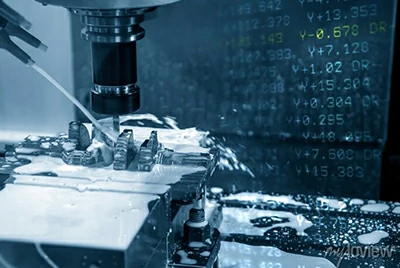

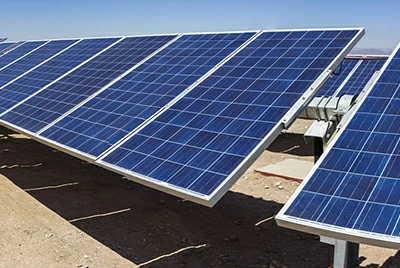
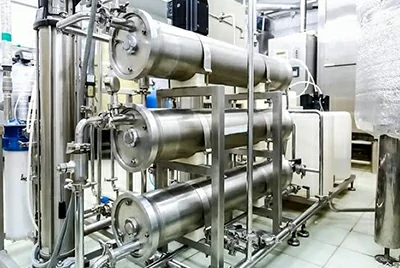
Standards & Compliance
In electrical wiring, both conduit safety and aluminum quality are crucial. Chalco's aluminum conduits and fittings are produced, tested, and traceable to international and North American standards, ensuring smooth approval in design and inspection stages.
Electrical Conduit Safety Standards
Ensuring conduit systems meet authoritative electrical standards is a must for project acceptance and long-term operation. All our aluminum conduits are designed, manufactured, and tested according to NEC (North America) and IEC (International) standards:
- ANSI C80.5 / UL 6A: Standards for Rigid Aluminum Conduit (RMC/ARC) including dimensions, threading, mechanical strength, and corrosion resistance
- UL 797-A: Specifies wall thickness, tolerance, and bending performance of Aluminum EMT Conduit
- IEC 61386-21/24: Classification of flexible and liquid-tight aluminum conduits by flattening resistance, impact strength, and flame retardancy
- CSA C22.2 No.45.1: RMC/EMT specifications for the Canadian market
- NEC Articles 344 & 358: Guidelines for field installation, grounding, and wire-pulling distances
Aluminum Alloy Material Standards
Material selection determines both the durability and electrical safety of the conduit. Chalco exclusively uses high-purity, low-carbon aluminum alloys that meet ASTM and ISO requirements:
- ASTM B241 / B241M: General specifications for seamless and welded aluminum tubes for building applications
- ASTM B221 / B221M: Chemical composition and mechanical properties for 6063-T5/T6 and 6061-T6 extruded tubes
- ASTM B308 / B308M: Salt spray resistance standards for marine-grade alloys such as 5052 and 5083
- ISO 209-1: Global standard for chemical composition tolerances of aluminum and its alloys
Mill Documentation & Third-Party Certifications
We deliver not just products, but a complete compliance package to help you pass owner and supervisor audits at once:
- Mill Test Report (MTR): Furnace number traceability, alloy chemical composition, and tensile test curves
- UL / CSA Listing Certificates: Indicate corresponding specifications, batch numbers, and safety listing codes
- RoHS / REACH Declarations: Ensure the conduits and fittings are free of restricted substances and exportable to the EU
- IP55 / IP67 Ingress Protection Test Reports: Certification of protection ratings for flexible and liquid-tight series
- COC & COA: Certificate of Conformance and Certificate of Origin, for customs clearance and project documentation
To request sample files or a custom compliance checklist, click the "Request Certification Documents" button below. We'll send you a full PDF kit within 24 hours.
Instant QuoteRigid Aluminum Conduit vs. Rigid Steel Conduit
When designing outdoor trunk lines, chemical plant cable trays, or overhead racks, engineers often weigh between lightweight corrosion resistance and maximum mechanical strength. The table below outlines the key performance differences between two common rigid metal conduits, helping you choose the right one quickly:
| Comparative dimensions | Rigid aluminum conduit (RMC-A) | Rigid steel conduit (RMC-S) |
| Weight | About 1/3 of steel pipe; one person can install it at high altitude, reducing the use of scaffolding/crane | Heavier; mechanical lifting is usually required for diameters ≥ 2″ |
| Corrosion resistance | Marine-grade AA 6063-T6/6061-T6 natural oxide film + optional anodizing, coastal/chemical environment 20 years+ | Needs galvanizing or coating; easy pitting after coating damage, high maintenance cost |
| Mechanical strength | Meet ANSI C80.5/UL 6A impact resistance requirements; medium and above load | Highest strength, can withstand heavy pressure or mechanical impact |
| EMI/magnetism | Non-magnetic, minimizes induced eddy currents and signal crosstalk, suitable for data centers and medical equipment | Magnetic, may produce electromagnetic interference |
| Ease of installation | Thread processing is labor-saving, and on-site cutting tools are more durable; high thermal expansion coefficient, expansion joints are required | Threading/cutting requires greater torque; low thermal expansion coefficient, easy to fix |
| Grounding requirements | Aluminum is a good conductor and must be continuously grounded; it is recommended to use aluminum/galvanized transition joints to prevent galvanic corrosion | Also requires grounding, wider selection of connectors |
| Life cycle costs | The unit price of the initial material is slightly higher, but lightweight + maintenance-free corrosion resistance, low total cost of ownership | Cheap materials, high cost of later anti-corrosion maintenance and labor |
| Typical scenarios | Offshore docks, solar power stations, food factories, lightweight bridges | Heavy-duty industrial workshops, subways/tunnels, densely populated fireproof areas |
For high humidity, salt spray, or EMI-sensitive environments with medium or lower mechanical loads, aluminum conduit is preferred
For installations exposed to heavy impact, or with extreme strength or fire resistance requirements, choose steel conduit
Let us know your environmental conditions, load requirements, and wiring length—we'll provide a free aluminum/steel hybrid solution and ROI analysis."
Instant QuoteFAQs
Can aluminum electrical conduits fully replace steel conduits?
In most indoor and outdoor wiring scenarios (e.g., commercial buildings, offshore platforms, chemical plants), aluminum conduits meet NEC and IEC standards in terms of strength, corrosion resistance, and grounding safety. For extreme mechanical stress or deep underground burial, we recommend reinforced steel conduit or additional mechanical protection.
Do aluminum conduits require anti-rust treatment or coating?
Rigid/EMT aluminum conduits naturally form a dense oxide layer that resists atmospheric and salt spray corrosion. For acidic or alkaline environments, choose models with anodizing or epoxy coating to achieve over 1000 hours of ASTM B117 salt spray resistance.
How to prevent galvanic corrosion between aluminum and copper?
Use aluminum alloy connectors, bonding jumpers, or install nylon/EPDM insulating gaskets and plastic-sealed locknuts at junctions with dissimilar metals (e.g., copper wires, metal boxes) to interrupt the electrical loop and stop galvanic corrosion.
Is grounding with aluminum conduit safe and reliable?
Yes. NEC recognizes aluminum conduit as an Equipment Grounding Conductor (EGC). RMC aluminum conduits made per UL 6A/ANSI C80.5 have an internal resistance ≤ 0.003 Ω/ft, equivalent to copper or steel conduit grounding—just ensure metallic contact at threads and use conductive paste.
Can aluminum conduits be bent using standard steel benders?
Yes. EMT aluminum tubes (½″–2″) can be bent using manual or hydraulic benders, requiring only 60% of the force needed for steel EMT. For Rigid aluminum conduit ≥ 1¼″, use CNC electric benders with aluminum-specific dies to avoid ovalizing or wrinkling.
What are the common sizes? Is custom cutting available?
Standard trade sizes range from ½″ to 6″, with 10 ft (3.05 m) fixed lengths. We offer custom cuts from 2–20 ft, pre-bent elbows, pre-threaded or plain ends, with matching aluminum connectors, elbows, and pull boxes. MOQ: 100 ft/size.
Does aluminum conduit cause thermal stress in hot or sunny conditions?
Aluminum's coefficient of linear expansion is 23 µm/m·°C. For wiring over 30 m, follow NEC 300.7(A) and use expansion fittings or L/R elbows to absorb displacement. We also supply sliding couplers and adjustable brackets.
Are your products UL / CSA certified? Can you provide test reports?
Yes. All RMC/ARC products are UL 6A & ANSI C80.5 listed. EMT aluminum conduits meet UL 797A, and flexible liquid-tight models comply with UL 1 & UL 360. Each shipment includes chemical composition, mechanical properties, and Vicat softening temperature reports, traceable to casting batch numbers.
What's the lead time and packaging method?
Common sizes are in stock and ship within 24–48 hours. For large diameters (>2″) or anodized bulk orders, lead time is 7–10 days. All pipe ends come with colored thread protectors and are bundled per UL shipping recommendations to avoid damage.
What accessories can be supplied along with aluminum conduits?
We supply matching aluminum elbows/connectors, liquid-tight fittings, zinc-aluminum explosion-proof boxes, ZI-Strut® metal brackets, and insulating bushings, which can be shipped together to save on multi-vendor procurement and container costs.
Chalco can provide you the most comprehensive inventory of aluminum products and can also supply you customized products. Precise quotation will be provided within 24 hours.
Get a quote


